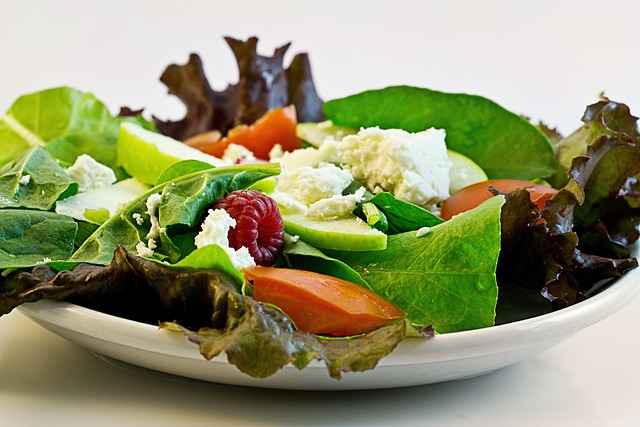Integrating mindfulness and yoga into daily life significantly enhances overall wellness by promoting mental clarity, emotional balance, and physical health. Mindfulness techniques like deep breathing exercises and meditation practices activate the body's relaxation response, reducing stress, while yoga exercises improve flexibility, strength, and balance, aiding in stress management. Healthy eating habits provide essential nutrients that support cognitive function and mood stability, and regular physical activity further enriches wellness by boosting energy levels and immune system function. Complementing these with gratitude journaling fosters a positive outlook and overall happiness. Together, these wellness practices create a cohesive approach to health, balancing mental acuity with physical vitality for a harmonious and fulfilling life. Regular self-care routines that include these elements are key to effective stress management and sustainable health improvements, highlighting the importance of wellness practices in maintaining overall wellbeing.
Embarking on a journey to enhance both mental and physical health can be a transformative experience, one that weaves together the threads of wellness practices, mindfulness techniques, and purposeful habits. This article serves as a guide to integrating these elements into your daily life for a holistic approach to well-being. We’ll explore how cultivating a consistent wellness practice, mastering meditation, adopting healthy eating habits, incorporating regular physical activity, and embracing deep breathing exercises and gratitude journaling can significantly improve your quality of life. Each section delves into practical strategies that align with self-care routines to promote mental clarity, emotional balance, and physical vitality, ensuring you’re equipped with a toolkit for lasting health and happiness. Join us as we navigate the path to a more balanced, mindful, and vibrant existence.
- Cultivating a Daily Wellness Practice: Integrating Mindfulness Techniques and Yoga Exercises for Holistic Health
- – Emphasize the importance of a consistent wellness practice that combines mindfulness and yoga to promote mental clarity, emotional balance, and physical flexibility.
- – Outline different mindfulness techniques suitable for beginners, such as focused breathing, body scans, or mindful eating.
- – Describe various yoga poses that can be incorporated into a daily routine to enhance overall well-being, with tips on modifying poses based on individual fitness levels.
Cultivating a Daily Wellness Practice: Integrating Mindfulness Techniques and Yoga Exercises for Holistic Health

Integrating mindfulness techniques into your daily wellness practices can significantly enhance both mental and physical health. Mindfulness, a form of meditation that involves focusing on the present moment with acceptance, can reduce stress and promote emotional regulation. By dedicating a few minutes each day to practice deep breathing exercises, individuals can activate the body’s relaxation response, counteracting the effects of stress. This simple act of conscious breathing not only oxygenates the brain but also fosters a state of calm conducive to clearer thinking and better decision-making.
Incorporating yoga exercises into your routine is another pivotal aspect of a holistic wellness practice. Yoga combines physical postures, stretching, and breathing techniques that enhance flexibility, strength, and balance, contributing to overall physical health. The discipline also encourages mental focus and self-awareness, which are essential for stress management strategies. By aligning your body and mind through yoga, you can cultivate a deeper connection with yourself, leading to improved well-being and a more centered approach to life’s challenges.
Complementing these practices with healthy eating habits further fortifies the foundation of holistic health. Nutritious meals provide the necessary fuel for both the body and mind, impacting energy levels, mood stability, and cognitive function. A balanced diet rich in whole foods, lean proteins, and a variety of fruits and vegetables supports the body’s systems and can help prevent chronic diseases. Additionally, maintaining a self-care routine that includes adequate sleep, regular physical activity, and gratitude journaling can create a harmonious balance between work, rest, and play, ensuring that your wellness practices are not just isolated activities but a cohesive approach to enhancing your quality of life.
– Emphasize the importance of a consistent wellness practice that combines mindfulness and yoga to promote mental clarity, emotional balance, and physical flexibility.

Integrating wellness practices into daily life can significantly enhance both mental and physical health. Mindfulness techniques, such as meditation, encourage a heightened awareness of the present moment, fostering mental clarity and emotional balance. By engaging in regular yoga exercises, individuals can improve their physical flexibility while also reaping the benefits of reduced stress and anxiety. The flow of movements in yoga complements the deep breathing exercises that are integral to mindfulness, creating a synergistic effect that not only tones the body but also calms the mind.
Incorporating a variety of mindfulness techniques into one’s daily routine can also include gratitude journaling, which shifts focus from stressors to life’s positive aspects, further enhancing emotional well-being. Healthy eating habits are another cornerstone of a holistic wellness practice. Consuming nutrient-dense foods supports physical health and can positively influence mental acuity and mood stability. Complementing these practices with regular physical activity is key; it increases energy levels and promotes a strong immune system, contributing to overall vitality. A consistent wellness regimen that harmonizes mindfulness and yoga with stress management strategies and healthy lifestyle choices can lead to a more balanced and fulfilling life.
– Outline different mindfulness techniques suitable for beginners, such as focused breathing, body scans, or mindful eating.

For beginners seeking to incorporate mindfulness into their daily lives, wellness practices such as focused breathing offer an accessible starting point. This simple yet effective technique involves concentrating on the rhythm of your breath, allowing your thoughts to pass like clouds in the sky without engaging with them. By doing so, you can cultivate a state of calm and presence that counteracts the stresses of daily life. Additionally, body scans are another mindfulness technique where one’s attention is moved through different parts of the body, observing any sensations, tension, or discomfort without judgment. This practice not only enhances body awareness but also fosters a deeper connection with oneself, promoting mental and physical health.
Incorporating yoga exercises into your routine can serve as a complementary mindfulness technique, integrating physical movement with meditation practices. These exercises improve flexibility, strength, and balance, while also encouraging a focused and meditative state of mind. Furthermore, healthy eating habits play a crucial role in wellness practices. Mindful eating involves savoring each bite, recognizing the flavors, textures, and sensations, which can lead to better digestion and a more enjoyable dining experience. Combining these mindfulness techniques with regular physical activity creates a holistic approach to stress management strategies, fostering a balanced and fulfilling lifestyle.
To further support your mental and physical well-being, consider adopting gratitude journaling as part of your self-care routines. This practice involves reflecting on positive experiences and expressing thankfulness for them. It shifts your focus from what is lacking to the abundance that exists in your life, promoting a positive outlook and enhancing overall happiness. Regular physical activity, deep breathing exercises, and maintaining a consistent self-care routine are foundational elements that contribute to sustainable health improvements, making them integral aspects of a comprehensive wellness regimen.
– Describe various yoga poses that can be incorporated into a daily routine to enhance overall well-being, with tips on modifying poses based on individual fitness levels.

Incorporating yoga into your daily routine can significantly enhance overall well-being by combining physical activity with mindfulness techniques. For those new to yoga or with limited mobility, starting with basic poses like Mountain Pose (Tadasana) can be beneficial. This grounding pose promotes a sense of stability and awareness of one’s posture, setting a foundation for more advanced exercises. As you progress, incorporating Sun Salutations (Surya Namaskar) can invigorate your body and synchronize your breath with movement, offering a full-body workout that also tones the abdominal muscles. These sequences not only improve flexibility but also stimulate internal organs, enhancing digestion and promoting healthy eating habits by encouraging conscious consumption. For those seeking to deepen their practice, Warrior II (Virabhadrasana II) strengthens the legs, stretches the chest and shoulders, and sharpens focus, embodying strength and resilience. Modifications such as using a wall for support or reducing the depth of the lunge can accommodate various fitness levels, making yoga accessible and effective for everyone.
In addition to physical poses, meditation practices are integral to a holistic wellness routine, serving as a powerful tool in stress management strategies. Guided meditations or mindfulness exercises can be performed for just a few minutes each day and have been shown to lower cortisol levels, the hormone associated with stress. A consistent meditation practice can also improve concentration, clarity of thought, and emotional health. To enhance this experience, pair your meditation sessions with deep breathing exercises, which help in activating the body’s relaxation response and can be performed anywhere, without the need for special equipment or space. By cultivating a daily self-care routine that includes yoga exercises, meditation practices, and deep breathing, you lay the groundwork for a life of wellness, where healthy eating habits and regular physical activity are seamlessly integrated into your lifestyle, and gratitude journaling becomes a natural expression of your appreciation for the present moment. This holistic approach to health not only nurtures the body but also calms the mind, leading to a more balanced and fulfilling life.
Incorporating a blend of wellness practices that encompass mindfulness techniques and yoga exercises can significantly bolster both mental and physical health. This article has outlined effective strategies for integrating these holistic approaches into daily life. By adopting meditation practices as part of your routine, you can enhance stress management and foster mental clarity. Complementing this with healthy eating habits ensures that your body receives the necessary nutrients to thrive. Engaging in regular physical activity, including yoga exercises tailored to your fitness level, can improve flexibility and strength while promoting emotional balance. Additionally, deep breathing exercises and gratitude journaling serve as powerful tools for self-care and can enhance overall well-being. Embracing these practices consistently can lead to a more balanced, resilient, and vibrant life.
